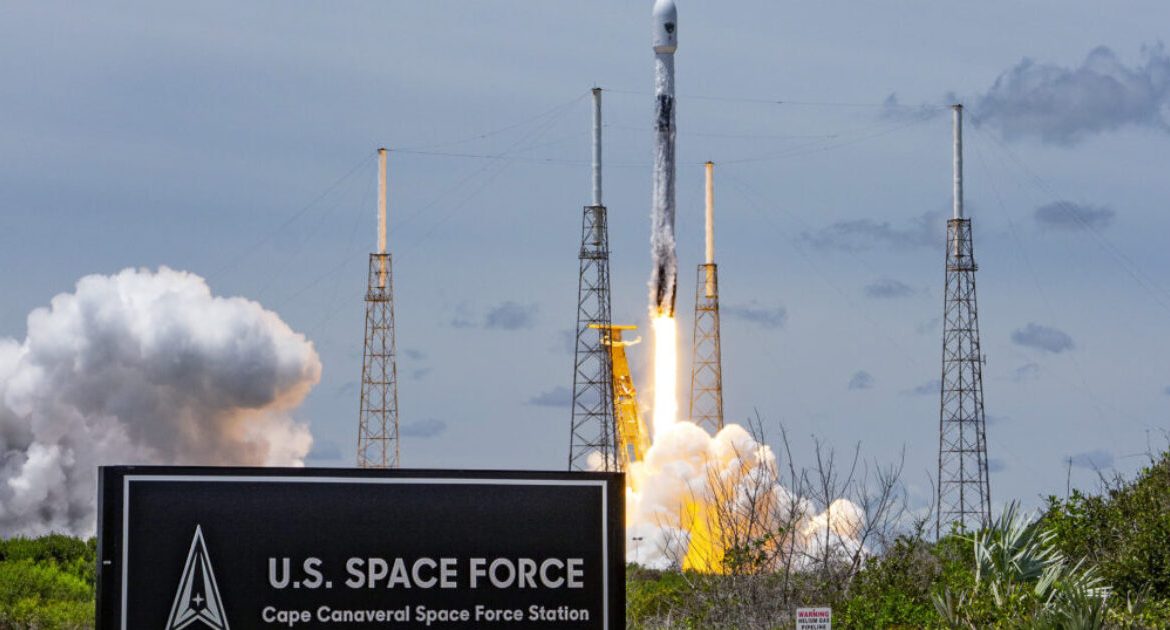
Real Space Wars: NASA and Space Force Tasked With Defending Against Outer Space Threats


The United States has two government agencies focused on defending the Earth from threats from outer space. NASA is tasked with protecting Earth from natural space threats like asteroids, while the Space Force is developing space warfare capabilities to protect U.S. space assets from adversary threats, largely from China and Russia.
NASA has completed its analysis of the 2022 Double Asteroid Redirection Test (DART), the first real-world attempt to deflect an asteroid. The spacecraft deliberately struck Dimorphos, a small moonlet orbiting the larger asteroid Didymos. Just before impact, the Italian cubesat LICIACube detached from DART and captured the only close-up images of the collision and its aftermath.
The results, published August 21, 2025, showed that the impact ejected about 35 million pounds (16 million kilograms) of dust and rock, roughly 0.5 percent of Dimorphos’ mass and 30,000 times greater than the spacecraft’s own mass. The debris plume acted like a rocket engine, delivering a much stronger push than the impact alone.
As a result, Dimorphos’ orbit around Didymos was shortened by 33 minutes. The key finding is that even a relatively small spacecraft can alter the trajectory of a rubble-pile asteroid, proving that asteroid deflection is a viable planetary defense strategy.
Planetary defense, however, should not be confused with space warfare. NASA established the Planetary Defense Coordination Office in 2016 to track, characterize, and mitigate natural threats such as asteroids and comets. Its mission is focused on detection and deflection, not military conflict.
The U.S. Space Force is tasked with countering adversary threats in orbit, particularly from China and Russia. General Chance Saltzman, Chief of Space Operations, has warned that China is rapidly expanding its anti-satellite arsenal, from ground-based lasers and missiles to satellites capable of disabling or destroying others, while Russia is pursuing a nuclear weapon designed for space. These advances, which Saltzman calls a “grave threat” to the United States, have prompted the Space Force to develop orbital warfare capabilities that include jammers, directed energy, kinetic weapons, and more resilient satellites able to maneuver and withstand attack.
In 2024, China conducted operations with three experimental satellites practicing “dogfighting” maneuvers in low Earth orbit, rehearsing tactics and procedures for on-orbit combat. In addition, China employs electronic jammers that can disrupt space-based communications, radar, and navigation systems, and has deployed an experimental satellite in geostationary orbit to practice space-based jamming.
Beyond these systems, China is building a “kill web” intelligence network using hundreds of satellites to track and target forces on Earth. Its ASAT program dates back to 1964 and gained attention in 2007 when China destroyed one of its own weather satellites, creating a massive debris field.
Russia’s space warfare program is equally alarming. The most concerning development is its pursuit of a nuclear ASAT weapon that would violate the Outer Space Treaty. Such a system would create a blast wave, intense radiation, and an electromagnetic pulse capable of disabling or destroying satellites across wide areas of orbit.
Analysts warn this could devastate civilian satellite infrastructure and severely weaken U.S. military capabilities, as radiation in space spreads much farther than in Earth’s atmosphere.
Russia has also demonstrated conventional ASAT systems. In November 2021, it destroyed its own Cosmos 1408 satellite with a direct-ascent missile, producing over 1,500 pieces of debris.
Russian co-orbital weapons involve large satellites releasing smaller “daughter” satellites that can approach and potentially destroy U.S. assets. In addition, Russia employs cyberattacks and satellite jamming alongside its direct-ascent missile program.
The threat is not limited to weapons alone. ASAT tests conducted by the U.S., Russia, China, and India have left 6,851 cataloged pieces of debris in orbit, with nearly 3,000 still posing hazards today. This growing debris field underscores the risks posed by militarization of space, where even a single test can jeopardize global satellite operations.
The shift marks a departure from the relatively peaceful era of the Cold War to today’s contested environment, where China and Russia are deliberately building capabilities to threaten U.S. satellites and challenge America’s ability to operate freely in space.
Recent training has underscored this shift. In “Resolute Space 2025,” the largest Space Force exercise to date, more than 700 Guardians trained in electromagnetic warfare, orbital operations, and space domain awareness.
The 1967 Outer Space Treaty prohibits nuclear weapons and weapons of mass destruction in orbit, but it does not forbid conventional weapons, leaving room for the development of new technologies.
Although NASA and the Space Force are preparing for very different threats, their work, combined with the rapid expansion of Chinese and Russian space warfare systems, demonstrates that we are quickly entering an age where space will become a new theater of engagement.
The post Real Space Wars: NASA and Space Force Tasked With Defending Against Outer Space Threats appeared first on The Gateway Pundit.
